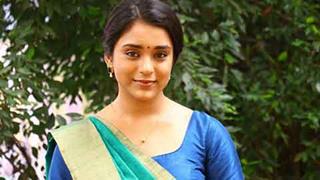Having faced rejection, at the hands of a little known Tamilan director early in her life, Hema Malini directed her energies Mumbai wards. She not only converted her initial setback to a triumph, but also proved that she was here to stay for a lifetime. She was the second south Indian actress after Vyajanthimala to excel at Bollywood. It is also a sheer coincidence that both of them are proficient in Bharatnatyam too.
Born in a remote village of Tamil Nadu on Oct 16, 1948, Hema Malini made her debut with Raj Kapoor in 'Sapnon Ka Saudagar' (1968). The film flopped, but 'Dream Girl' nevertheless was introduced into the arena, where she was to be coronated as the queen subsequently. Some ordinary films followed, till Geeta Aur Seeta (1972) gave her recognition in Bollywood as a top film star. The film had Hema's double role. Both the characters of Geeta and Sita were diametrically different from each other. Hema justified the double role with a performance that was par excellence.
She was able to check the down slope of the career graph of Rajesh Khanna with Prem Nagar (1974). As an omen of things to unfold in future, films like Raja Jani (1972), Jugnu (1973), Sholay (1975) opposite Dhramendra, made her popularity soar higher and higher. Hema proved her ability to delve deep into woman's consciousness and emote its profundities on screen, in successful films like Khushboo (1975), Kinara (1977) and Meera (1979). They also created a versatile image of Hema Malini and gave her an opportunity to work with Gulzar.
 At a time when she was riding a crest of popularity, famed actors like
Jeetendra and Sanjeev Kumar proposed her for marriage. But she had something else in mind. Hema Malini later broke conventions by entering into matrimonial alliance with already married Dharmendra. The marriage not only prospered, but also made
Dharmendra-Hema one of the most sought after Bollywood couples ever.
At a time when she was riding a crest of popularity, famed actors like
Jeetendra and Sanjeev Kumar proposed her for marriage. But she had something else in mind. Hema Malini later broke conventions by entering into matrimonial alliance with already married Dharmendra. The marriage not only prospered, but also made
Dharmendra-Hema one of the most sought after Bollywood couples ever.
The late seventies and early eighties was the golden era of her career when she held the number one slot for a number of years. There was no other actress of Hema's stature in Bollywood, except the inimitable Rekha. Due to her knowledge of classical dance Hema's song-dance sequences were virtually cine goers delight. She also put her creative instincts to good use by producing films like Swami (1977), Sharara (1984), Aawargi (1987).
Hema starred in Manoj Kumar's greatest production Kranti (1980). Kamal Amrohi's extravaganza Razia Sultana bombed at the box office. In Ek Chaddar Maili Si (1986) and Rihaee (1990), we saw Hema as a mere shadow of the past. Later she also a left a mark on the small screen by directing serials like Dil Aashna Hai (1991) and Mohini (1994), Noopur (1990) and Women of India (1996). In a film based on Gandhiji's life Hey Ram (2000), Hema Malini came alive on the bigger screen again. Her latest hit Baghban (2003), opposite Amitabh Bachchan is almost reminiscent of her golden era of the seventies. The stars came together after almost nineteen years. Her stirring performance made people nostalgic of the Dream Girl of the past.
 Lately Hema is busy casting the careers of daughter Esha and Ahna. Besides, she also edits a Mumbai based woman's magazine. Unlike, the case of hubby Dharmendra, Hema got the Filmfare award rather early in 1972. In 1992, Hema Malini was awarded the Padma Bhushan by the government of India for her contribution to the society. In August 2003, the President of India nominated her to the Rajya Sabha.
Lately Hema is busy casting the careers of daughter Esha and Ahna. Besides, she also edits a Mumbai based woman's magazine. Unlike, the case of hubby Dharmendra, Hema got the Filmfare award rather early in 1972. In 1992, Hema Malini was awarded the Padma Bhushan by the government of India for her contribution to the society. In August 2003, the President of India nominated her to the Rajya Sabha.
In the latest scramble of stars joining political parties, Hema too has joined BJP at the behest of its President Venkiah Naidu. The veteran of over 100 films has campaigned hard for her husband Dharmendra, who has made into the Lok Sabha from Bikaner constituency. Only time can tell how far this famous pair of Veeru and Basanti with Hema sitting in the Upper House and Dharamji seated in the Lower House, can re-enact Sholay in public life. Hema Malini has lived life to its utmost with held high and we pray for her long life.


















